HISTORY AND DEVELOPMENT OF LAPTOP FROM THE TIME TO THE TIME
Laptop is a personal computer that is portable or mduah brought everywhere. The name of the laptop itself is taken from the way people use this personal computer. Formerly this personal computer is often used on lap, then named Lap Top = Top Lap.
Laptops began to be a serious conversation among producers and PC designs in the early 1070s, personal computer type portable lifted to the surface. A "personnel, portable information manipulator" imagined by Alan Key at Xerox PARC in 1985, and described in 1972 in his paper "Dynabook".
The IMB SCAMP project (not internet scam scam) is Special Computer APL Machine Portable was demonstrated in 1973. This prototype is based on PALM (Put All Logic In Microcode) processor. The IBM 5100, the first commercially available portable computer, appeared in September 1975, and was based on the SCAMP prototype.
The history of a laptop or notebook started in 1968, when the designers at Xerox PARC created a laptop prototype called Dynabook. That is the beginning of the history of mobile-computing.
The end of 2008, for the first time in history, laptop sales surpassed desktop sales.
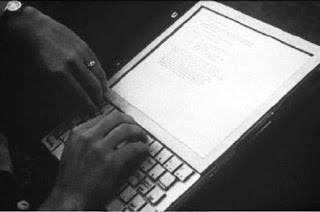
Dynabook
It started with an idea in the 1970s by Alan Kay of Xerox Palo Alto Research Center had a vision for a laptop that did not require a cable, the size of a notebook. He named it Dynabook. Kay's Dynabook was created with wireless networking capabilities. And this is starting to move the wheel of the development of a true portable computer as it is today.
Alan Key of 1968 designed a prototype of what he called "PC for children of all ages". Kay wants to create a thin portable computer, weighing about 1 kg, and has a screen that is close to the size of a paper page. (Kay mentioned that he needs a screen with 1 million pixels).
Unlucky, the technology needed to produce this tool was not developed at the time. So Kay's vision of Dynabook can not be realized.
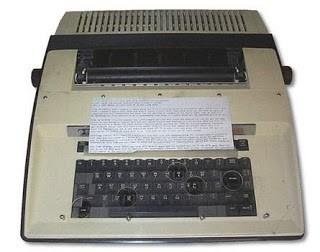
Portable Teletype
40 years ago, a computer of its size filled a room, and had a lower-capacity processor than a smartphone now. However, the dream of a portable computer already exists.
March 1968 is not possible to carry a computer, but the tool can be made portable. Namely a Teletype interface, made by Teletype Corporation KSR-33.
This tool is used to send what is typed from one location to a Teletype machine in another remote location. It weighs about 30 kg. You can watch videos about KSR-33 on YouTube.
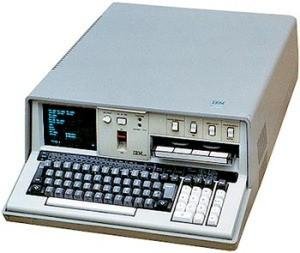
IBM 5100
IBM 5100 is a sophisticated computer designed in 1975. Years before an "official" laptop appeared, IBM designed a computer that for them was powerful and fit enough to fit inside the bag and move easily.
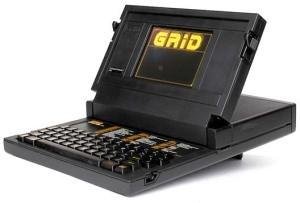
GRID Compass
In 1979, William Moggridge of Grid System Corporation created the first portable computer: The Grid Compass Computer 1109. It has 340 kilobytes of memory, a magnesium die-cast box and an electrominescent folding screen. Nasa bought lots of it in the $ 800 seed range, for use on the space program.
Compass GRID is certainly one of the earliest laptop computers - many believe this is the first laptop design. Developed in 1979 by British Bill industrial designer Moggridge, has 340kb of memory and has been put to good use by NASA in the 1980s.
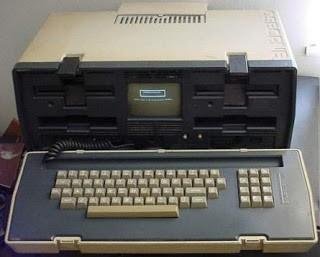
Osborne 1
In 1981, the first portable computer finally emerged. Computer maker Osborne Computer Corp, designing Osborne 1. This portable computer has a 5 "diagonal screen, and has a carrying case bag.
This machine has two disk drives for floppy-disk. It costs $ 1,795 including software and weighs about 10kg.
Portbale computers that have an 8 bit CPU machine is then widely accepted and the number is increasingly improved. Osborne 1, which was released in 1981, uses zilog Z80 and weighs 10.7kg (wow laptops were really heavy) and that does not include batteries. The CRT screen is only 5 Inch or 13 cm, and uses 5.26 inches of single density floppy drive. In the same year the first portable laptop computer, the Epson HX 20, was announced. Epson has an LCD screen, rechargeable battery, and a 1.6 kg calculator printer.
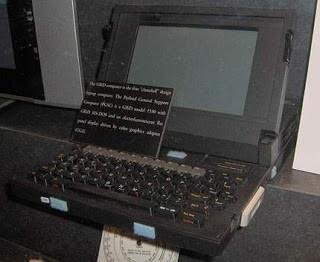
Grid Compass 1100
This portable computer is the first to use the fold, which is using clam-shell technique. Originally designed for NASA, and available to the general consumer in 1982.
Grid Compass 1100 weighs 5.5 kg, with memory of 340KB. It costs $ 8000 including software and maintenance agreements (some kind of warranty).
But this machine did not last long in the market, because it is not compatible with IBM. (At that time the popular PC was IBM compatible).
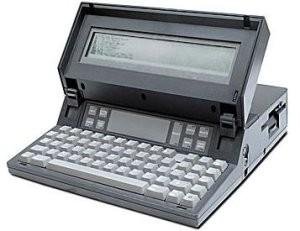
Gavilan
The third stage in 1983 Gavilan Computer produces a laptop computer that works as well as MS-DOS on the 8088 processor. Produced with 64K RAM, upgraded to 128K. Weighing around 9 pounds, it has a touchpad / mouse in front of the top of the keyboard.
Historians argue that Gavilan is the most considered laptop of the original laptop. It was launched in 1983 and sold in general as a revolutionary portable computer. Equipped with the latest Intel 8088 5MHz processor and a floppy disk drive, which makes Gavilan a hit instantly.
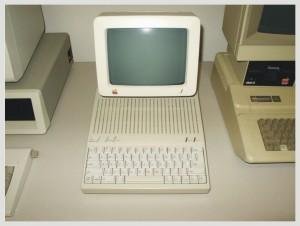
Apple IIc
In 1984 Apple introduced the Apple IIc model. Apple IIc is a notebook-about the size of a computer, but not the actual Laptop. It has a 65C02 microprocessor, 128 kilobytes memory and an internal 5.25-inch floppy drive, two serial ports, mouse port, modem card, external power supply, and can be folded. The computer itself weighs 10 to 12 lb (5kg), but the monitor is a bit heavier. The Apple IIc has a 9-inch monochrome monitor and optional LCD panel.
The combination of computer / LCD panel has made it a portable computer. Apple IIc is marketed to home and educational fields, and earned success for about five years. Other companies such as IBM, introduced other laptops the following year. The first commercially released portable computer is the IBM PC, unlike the Apple IIc, the PC convertible is really a Laptop computer. As Gavilan Computer was introduced in 1986.
Features: Microprocessor 8088, 256 kilobytes Memory, Two 3.5-inch (8.9 cm) floppy drive, An LCD display, Parallel and printer serial port, Space for internal modem andA basic software includes word processing, calendar calendar, address book, and calculator software. With a solid weight of 12 lbs (5.4 kg), the PC is sold in the range of $ 3500. Become the first portable computer with clamshell design like laptop now. The success of a PC that can be turned into a catalyst for parapesaing like Compaq and Toshiba turned this clamshell design into their own portable computer. And start the era of a laptop computer.
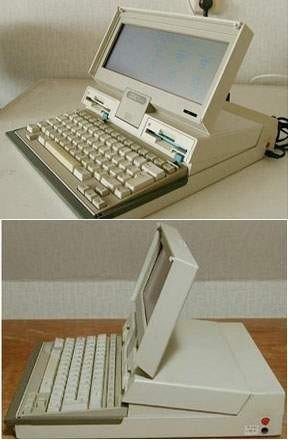
IBM PC Convertible
In 1985, many technology observers wondered if the concept of a laptop would last long. In a New York Times article, Erik Sandberg-Diment questioned "what's happening with a laptop?" After he saw the decline in the number of laptop usage at the Comdex computer exhibition from 1983 to 1985.
But in 1986, IBM introduced the IBM PC Convertible in the market. With a price of $ 1995, this laptop is the first successful laptop in the market. It was also the first IBM machine to use a disk drive for a 3.5 "floppy disk.
It weighs 5.5 kg and has 256KB of memory. There are two disk drives, LCD display screen, parallel port for printer, and basic software.
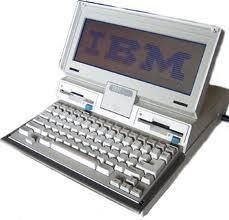
IBM Convertable
Released in 1986 the IBM PC Conversion represents a laptop design change on the European continent with a "sleep" function (wake up) simply by pressing the computer's power button.
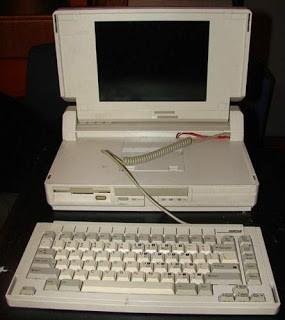
Compaq SLT / 286
October 1988, Compaq debuted with SLT / 286. The first portable computer to use a VGA screen (640 x 480 pixels).
It weighs 6.3 kg, with a 20MB hard disk drive, 12MHz processor. The keyboard can be removed from the body of the laptop. This is the first portable computer that is compact enough to carry in flight.
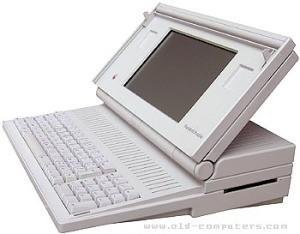
Mac Portable
Portable Mac is a distant cousin of what is now called the MacBook. This mac portable is the company's first attempt at creating a battery-powered portable. Portable Mac interface designs are much closer than those of previously existing laptops.
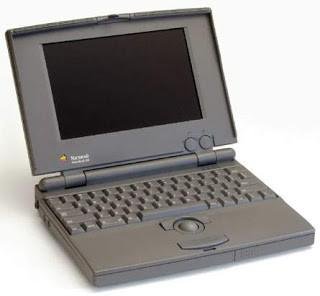
Apple PowerBook 100
The next jump after Compaq SLT / 286 was the Apple PowerBook 100, which appeared in 1991. This laptop was made by Sony for Apple, and used the trackball instead of the mouse.
This laptop has palm-rest for comfort. Then palm-rest becomes a standard feature for all laptops.
PowerBook 100 uses 16MHz processor, 16 bit CPU and 2MB RAM (which can be expanded up to 8MB). 20MB hard drive, 640 × 480 pixel passive-matrix screen, and a mono speaker. It weighs about 7 kg, and it costs $ 2500.
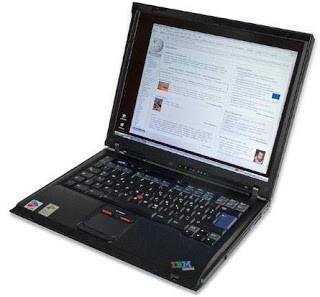
IBM ThinkPad
In late 1992, IBM mimicked the compact PowerBook design by introducing the IBM ThinPad series. The most notable version is the ThinkPad 700C, which uses the Windows 3.1 operating system, and has a 120MB HDD.
CPU uses Intel 486SLC 25MHz processor. The screen is TFT active-matrix 10.4 ". For pointing, wear a small red stick.
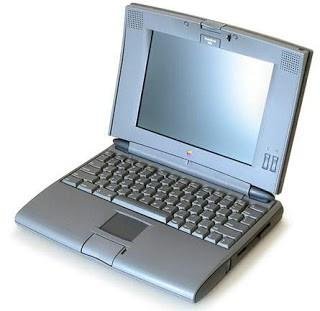
Apple PowerBook 500
In 1988, George Gerpheide found a touchpad based on capacitance. But this technology has not appeared on laptops until 1994. Apple PowerBook 500 is the first to use the touchpad. Apple called it a trackpad, which other vendors soon followed.
PowerBook 500 series consists of 4 models: 520, 520c, 540 and 540c.Specifications using 25MHz processor, 4MB RAM (maximum 36MB), 9.5 "screen. HDD up to 320MB, a size that is quite amazing for the time.
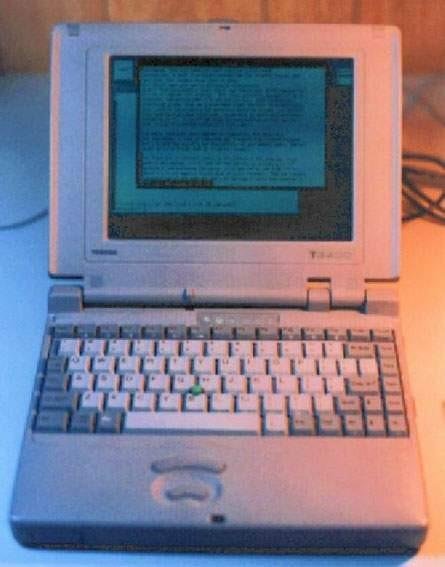
Toshiba Portege T3400
A year and a half before the emergence of Windows 95, early 1994, Toshiba came with his first laptop. There are two models in the Portege T3400 series, the monochrome screen for $ 2599, and the active-matrix color screen for $ 3900. Both use Windows 3.1
Toshiba advertises it as a subnotebook, with a sleek look, and fashionable gray color. Batteries use high-powered lithium ions, called the time as the latest mobile energy technology. T3400 can be switched on for 6 hours. The battery can be recharged for 3 hours until fully charged in the engine state, or for 8 - 10 hours if it is on.
Processor used Intel 486SX, with 4MB RAM (max 20MB), and HDD 120MB. This laptop also has a PCMCIA slot for extra memory. It weighs 1.8 kg.
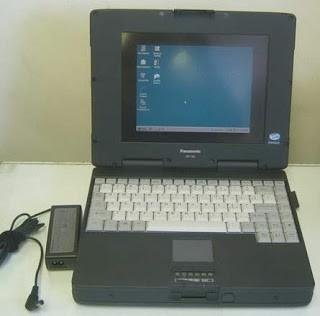
Panasonic Toughbook CF-25
In 1996, when most computer makers pointed to a sleeker and faster model, Panasonic sought to make thick laptops and break-resistance. The result is the Toughbook CF-25, the first model of the sturdy Panasonic Toughbook (which still continues to this day).
CF-25 is designed to withstand falling from a height of 2 feet (about 60 cm or as high as a table) and immune to dust and immune to moisture. The Toughbook's first model wears an aluminum alloy casing.
Intel Pentium I 166Mhz processor, with 96MB of maximum RAM, and 1GB HDD. This laptop is suitable for use in rough environments, such as battlefields.
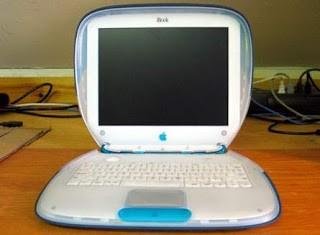
Apple iBook G3
Apple iBook G3 is one of the innovative ideas of Steve Jobs. At Macworld Expo in New York in 1999, Steve Jobs amazed everyone when he took the iBook to the stage and wore it for Internet surfing.
That's the first laptop to use wireless-card. Jobs claims the G3 as the second fastest portable computer in the world. The first fastest according to his claim is the Apple PowerBook.
Apple iBook G3 also comes with a refreshing color.
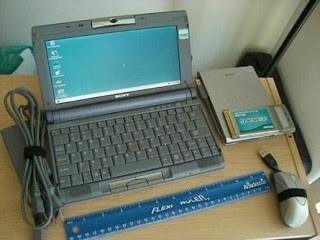
Sony PictureBook
Apple wowed the world with its beautiful style and wireless networking. But the iSight camera that is now on the MacBook, first appeared on a laptop with Windows 98. In 1999, Sony launched the VAIO C1 PictureBook for $ 2299.
This VAIO laptop weighs 1.4 kg. Simply compact and has a bult-in camera that can record still images and move videos up to 60 seconds.
PictureBook is also the beginning of what is now (a decade later) known as netbook. Its thickness is only 1.45 ", and it does not use external drives either floppy or CD-ROM.
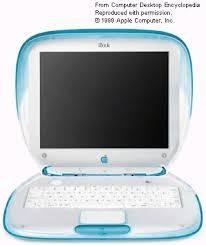
iBook
This iBook may be an inspiration for Apple's logo design. The book represents a major change in approach to laptop prices. The iBook is a laptop at an affordable price for consumers and sold in large quantities. not until 2006 iBook replaced with a Macbook. The clamshell 'original design' is clad in several colors such as yellow, orange, black with the dominant white color of the color that Apple has launched so far.
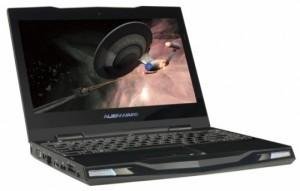
Alienware M11x
Alienware M11x is a big jump for portable laptop power. Offering completely edge cutting hardware, the M11x proves that desktops are no longer required for intensive computing tasks.
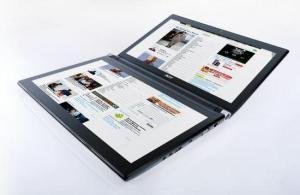
Acer Iconia
Acer iconia is a dual screen laptop that combines two 14 inch screen. The other screen can be used as a traditional keyboard.dan also to edit the photo when the main screen to diapaki to surf the web.
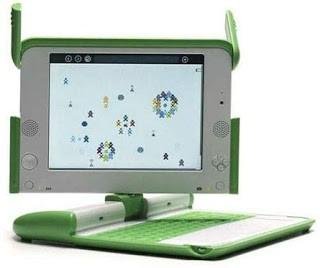
OLPC XO (one laptop per child)
The Asus Eee PC was widely known as a netbook innovation in late 2007. But, in 2005, long before the emergence of Asus Eee, Nicholas Negroponte had introduced the $ 100 laptop concept at the World Economic Forum in Davoz, Switzerland.
Negroponte's dreams gradually become OLPC XO (one laptop per child) with Internet access capabilities sold for $ 200. When OLPC offered XO with a give-one / get-one scheme at the end of 2007, the enthusiasm for the computer skyrocketed.
Intel and Microsoft quickly followed the XO line, super-cheap and super-portable. Then suddenly the netbook became a segment that grew very fast in the computer market.
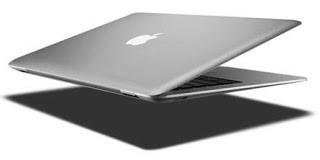
Apple MacBook Air
Early in the 21st century, laptops began to become much faster, with large HDD sizes and better graphics capabilities. In the third quarter of 2008, for the first time in the history of laptops sales surpassed desktop sales.
Early 2008, Apple launched Apple MacBook Air. Previously, in 2004 Sony VAIO X505 is a laptop with an impressive achievement with thinness and with a light. But MacBook Air came up with the idea of "how thin a computer". With a new Intel chip and a non-removable battery, but without an optical drive, Air became a star on Macworld 2008.
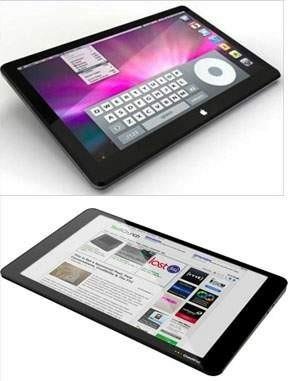
TechCrunch CrunchPad
Web tablets seem to be the next evolutionary stage in the world of portable computers. This kind of tablet is not very developed yet, but at least there are real products, like CrunchPad made by TechCrunch.
This tool is a Web tablet with Linux OS (custom built), and use Intel Atom chipset. Got two USB ports, webcams and mic. Meanwhile, rumors are circulating that Apple will launch the Apple tablet later in October 2009.